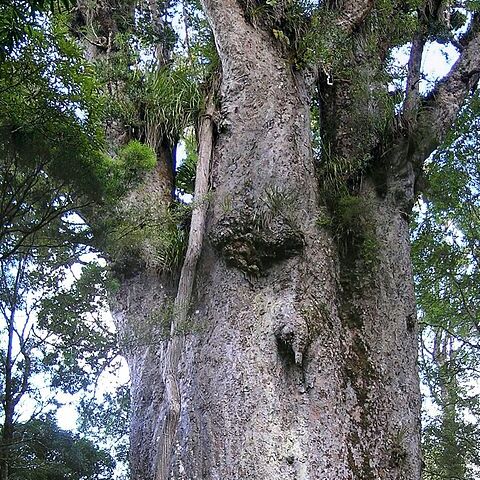Trees monoecious; branches usually whorled on young trees, becoming irregularly arranged on mature ones, with orbicular scars of deciduous branchlets; winter buds globose, small. Leaves spirally arranged on main branches, opposite or alternate on lateral branchlets, leaving cushion-shaped scars on falling, pinkish or reddish when young, finally dark green, greatly variable in size and shape even on same branchlet, leathery, with numerous, indistinct, parallel, thin veins; petiole flattened, short. Pollen cones axillary, solitary, upright, cylindric, hard; microsporophylls densely arranged. Seed cones globose or broadly ovoid; bracts densely arranged, flabellate, apex thickened. Seeds detached from bracts, with a lateral wing on 1 side and a small protrusion (occasionally developed into a wing) on other. Cotyledons 2.
Monoecious, glabrous trees. Leaves dimorphic, opposite or subopposite on plagiotropic shoots, spirally arranged on orthotropic shoots, broad, with numerous, subparallel, longitudinal veins. Male cones axillary or terminal on short, axillary shoots, with numerous basal bracts; microsporophylls spirally arranged, with short stipes and somewhat thickened imbricate or valvate apices. Female cones terminal on short axillary shoots, smooth; bract and scale fully fused; bract scale broader than long, apically rounded, shedding at maturity to leave the persistent thick central axis. Seeds asymmetrically winged, free from scale. Germination epigeal. Cotyledons 2, oblong or lanceolate, subsessile, with fine subparallel, longitudinal veins.
Plants monoec. or dioec. Male strobili solitary, axillary, cylindric to ovoid, with several scale lvs at base; sporophylls densely, spirally arranged on axis; sporangia 5-15. Female cones globular to subglobose terminating short branchlets; carpidia spirally arranged, coriac. to woody, broadly 3-angled and widened above, narrow at base, each with one inverted ovule. Seeds free, compressed, winged. Cots 2. Tall trees, us. very resiniferous; lvs thick, coriac., lanceolate to elliptic oval, with subparallel veins. About 15 spp.: Philippines to Polynesia, Australia and N.Z. The N.Z. sp. endemic.
Large trees. Microsporophylls with sharp creases dividing the apical part into three or more facies. Pollen cones with a short peduncle. Seed bracts always blunt along their apical margins. Leaves not glaucous underneath.
Large trees. Pollen cones with spoon-shaped microsporophylls without angled creases, rarely sessile. Seed cones in most cases at least 7 cm long and the seed bracts always blunt along their apical margins.
Arboris. Squama feminea projectioni apici instructa. Strobilus femineus 5-6x-6-7 cm, Strobilis masculinus sessilus.

